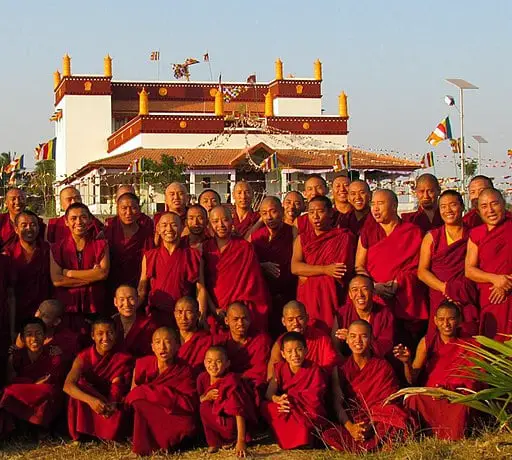Buddhist monasticism community living for a purpose
Buddhist monasticism is one of the earliest surviving forms of organized monasticism and one of the fundamental institutions of Buddhism. Monks and nuns, called bhikkhu (Pali, Skt. bhikshu) and bhikkhuni (Skt. bhikshuni).
What is the purpose of Buddhist monasticism?
Practice, Preserve, and Share the Buddha’s teachings on the three higher training—ethical conduct, concentration, and wisdom.
Responsible for the preservation and dissemination of the Buddha’s teaching and the guidance of Buddhist laypeople.
Three surviving traditions of monastic discipline (Vinaya), govern modern monastic life in different regional traditions: Theravada (Sri Lanka and Southeast Asia), Dharmaguptaka (East Asia), and Mulasarvastivada (Tibet and the Himalayan region).
After the parinirvana of the Buddha, the Buddhist monastic order developed into a primarily cenobitic movement. The practice of living communally during the rainy vassa season, prescribed by the Buddha, gradually grew to encompass a settled monastic life centered on life in a community of practitioners. Most of the modern disciplinary rules followed by monks and nuns —the Pratimokṣa— relate to such an existing, prescribing in great detail proper methods for living and relating in a community of monks or nuns. Monasteries grew considerably after the Buddha’s death.
The purpose of Buddhist monasticism is to provide a setting for the pursuit of spiritual development. Monks and nuns are expected to live a life of simplicity and renunciation and to devote themselves to the practice of meditation and the study of the Dharma. They are also expected to be role models for lay Buddhists and to help to spread the Buddha’s teachings.
What are the Benefits of Buddhist monasticism?
The benefits of Buddhist monasticism are many. Monks and nuns are able to devote themselves to the pursuit of spiritual development without the distractions of everyday life. They are also able to live a life of simplicity and renunciation, which can be very liberating. Additionally, monks and nuns are able to help to spread the Buddha’s teachings, which can benefit many people.
Of course, there are also challenges to Buddhist monasticism. Monks and nuns must live a very simple life, and they must be willing to give up many of the things that most people take for granted. Additionally, they must be able to deal with the challenges of living in a community of people, and they must be able to maintain their discipline in the face of temptation.
Despite the challenges, Buddhist monasticism can be a very rewarding path. Monks and nuns are able to make a real difference in the world, and they are able to achieve a level of spiritual development that is not possible for most people. If you are interested in learning more about Buddhist monasticism, there are many resources available online and in libraries. You can also contact a Buddhist monastery or temple to learn more about their specific practices and traditions.
Image credit
Darrenjsmith, CC BY-SA 4.0
